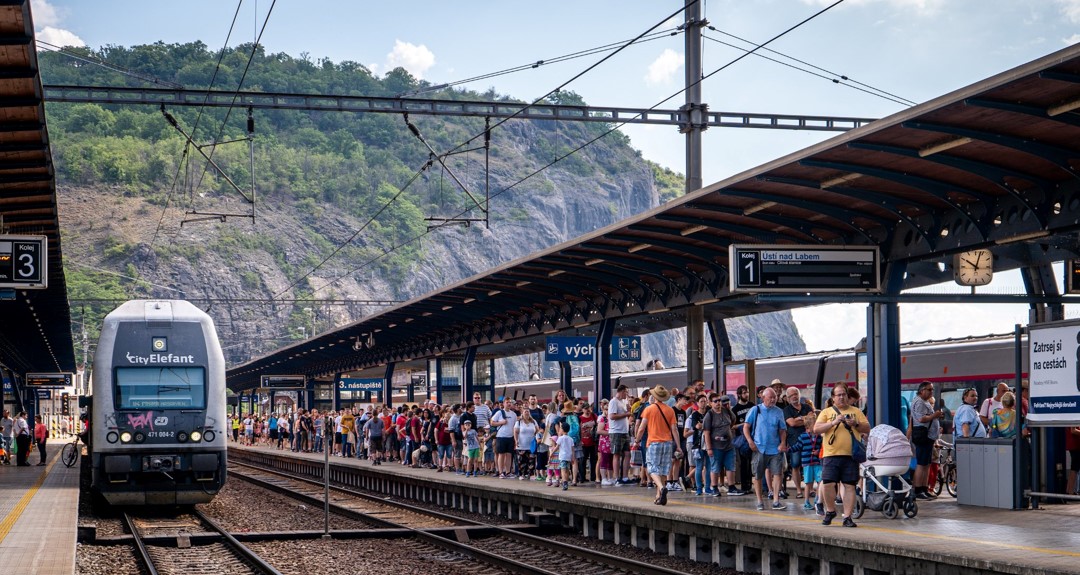 Správa železnic is continuing Czech high-speed rail plans as recently has selected the contractors for the development of documentation and design work for two sections.
Správa železnic is continuing Czech high-speed rail plans as recently has selected the contractors for the development of documentation and design work for two sections.
The rail infrastructure manager has selected the Czech-French association of companies Valbek-Sudop Brno-Egis to develop and deliver the documentation for the zoning decision of the high-speed line (VRT) between Ústí nad Labem and the Krušnohorský tunnel portal, which is part of the future new connection between Prague and Dresden.
The association will prepare the technical design of the Ústí nad Labem –portal of the Krušnohorský tunnel, including its connection to the highway. The main objective of the contract for the approximately 11 km long section is the issuance of a zoning decision, the preparation of documentation for the Environmental Impact Assessment (EIA) of the construction, and the evaluation of the construction’s economic efficiency.
The project includes the connection to existing infrastructure, modification of existing infrastructure and construction of a new one.
It also includes the reconstruction of the existing track on the section Ústí nad Labem západ – Chabařovice or the design of a maintenance center for the new VRT in the Chabařovice station location.
In 2021, Správa železnic and DB Netz selected ILF Consulting Engineers Austria to prepare the documentation for the zoning decision for the Krušnohorský tunnel which will connect Heidenau and Ústí nad Labem. The work is expected to be completed in 2024.
The Krušnohorský tunnel (Ore Mountains Tunnel) is designed to allow mixt traffic (passenger and freight trains), while there will be more connections transporting goods on the line.Mixed traffic in the tunnel will allow the transfer of up to 150 trains a day from the Elbe Valley and will significantly contribute to reducing noise on the existing line to Dresden.
In January 2021, the Ministry of Transport has approved the feasibility study for the new Prague – Dresden railway line with the first section between Prague and Litoměřice which will be used for passenger transport at speeds of up to 320 km/h. The section across Central Bohemian Uplands (in northern Bohemia, Czech Republic) and further to Germany will also be used by freight trains, thanks to which traffic in the narrow Labe (Elbe) Valley will be relieved. The Prague – Ústí nad Labem – Dresden high-speed line consists of the Středohorské and Ore Mountains tunnels. In the tunnel under the Central Bohemian Uplands, passenger trains will run at speeds of up to 250 km/h and in the Krušnohorský (Ore Mountains) tunnel 200 km/h. The Středohorský tunnel under Central Bohemian Uplands will be 18 km long, while the Krušnohorský tunnel will have 26 km of which 11.7 km in the Czech Republic and the remaining 14.3 km on German territory.
For the extension of the high-speed line in southern Moravia, Správa železnic and the joint venture of Valbek, Mott MacDonald and Egis Rail signed a contract for the development of documentation for land use planning (DÚR) and documents for the EIA process of assessing the effects of construction on the environment.
The contract covers the preparation of the technical design of the Šakvice – Rakvice high-speed rail (VRT) section that will extend the already planned VRT South Moravia by approximately 10 km.Originally, this line was supposed to connect to the existing Brno – Břeclav near Šakvice corridor.
The South Moravian connection, being prepared from Modřice, was originally supposed to connect to the existing Brno – Břeclav near Šakvice corridor, but the ongoing design work shows that the proposal from the feasibility study would limit future traffic on the line. Thus a new double-track above-grade railway will allow trains to operate at a speed of 230 km/h. The relocation of the connection was recommended and also approved by the Ministry of Transport.
The work schedule assumes obtaining a zoning decision in 2025 and the construction is expected to start approximately two years later. The line will be used exclusively for passenger traffic, and trains will travel at a speed of 320 km/h.
The 41 km South Moravia high-speed line from Brno to Šakvice is part of the international connection of the Czech Republic with Austria and Slovakia and, in a broader sense, belongs to the connection between the capitals of the V4 countries. This section is expected to be commissioned in 2030.
Both sections will become part of the new high-speed line from Brno to Břeclav, which after its completion will reduce the journey time by 10 minutes compared to the existing line.
The construction of a new high-speed railway in the Brno – Rakvice section and the modernisation of the existing line further to Břeclav will ensure a quality connection to Slovakia and Austria. VRT Praha – Brno – Ostrava / Břeclav will form the basis of a network of high-speed railway system in the Central Europe. The line will also be used to the connections towards Budapest or Warsaw.
The Czech high-speed rail strategy was approved in 2017 and is part of the TEN-T, with plans expected to complete the first sections in 2030 to be integrated into the Core Network.
Share on:







